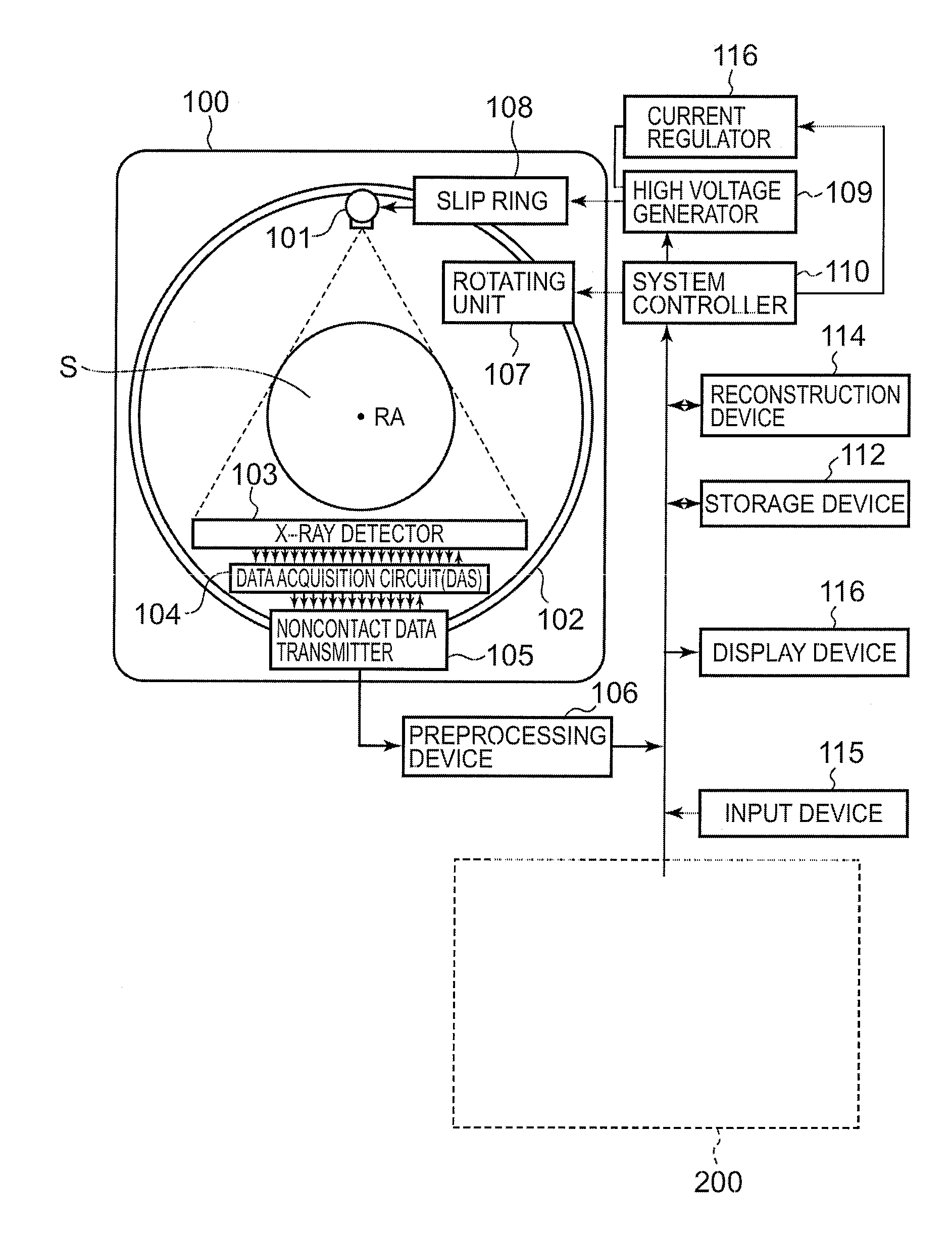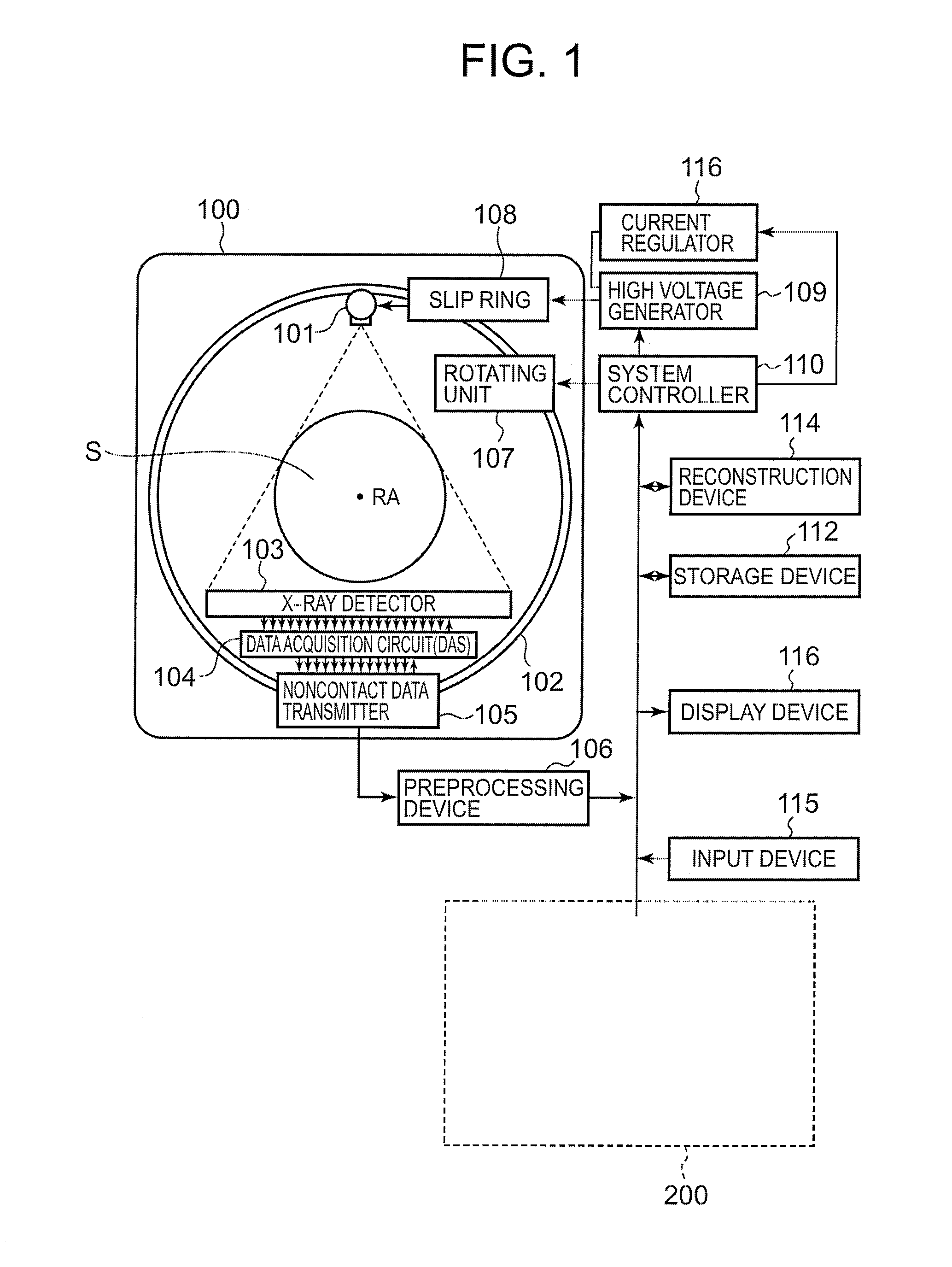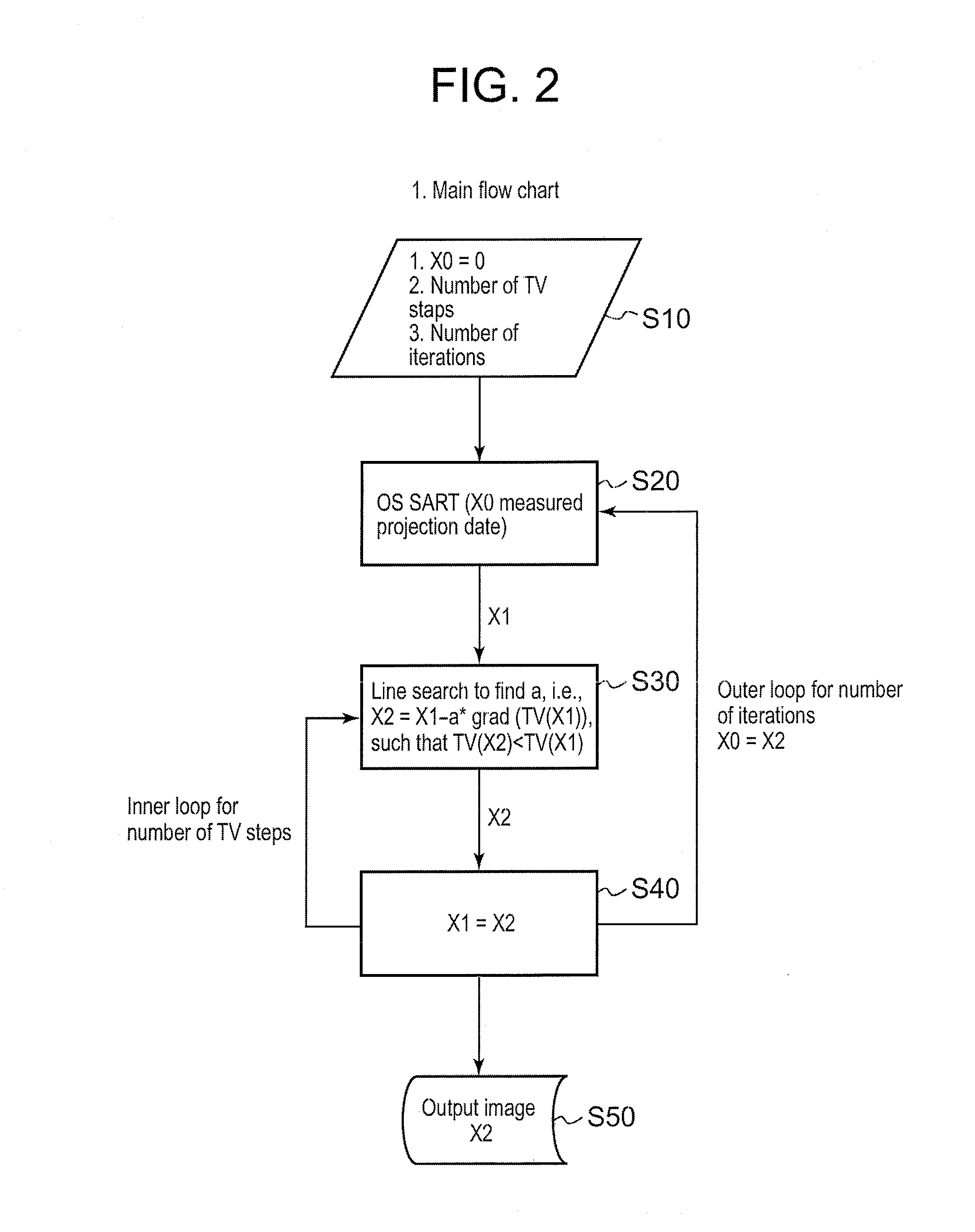Novel implementation of total variation (TV) minimization iterative reconstruction algorithm suitable for parallel computation
a technology of total variation and iterative reconstruction, applied in the field of image processing and system, can solve problems such as unsolved and require improvement, image processing cannot be implemented for parallel computation, and takes a long time to finish computation, so as to minimize the total variation
- Summary
- Abstract
- Description
- Claims
- Application Information
AI Technical Summary
Benefits of technology
Problems solved by technology
Method used
Image
Examples
Embodiment Construction
)
[0021]Referring now to the drawings, wherein like reference numerals designate corresponding structures throughout the views, and referring in particular to FIG. 1, a diagram illustrates one embodiment of the multi-slice X-ray CT apparatus or scanner according to the current invention including a gantry 100 and other devices or units. The gantry 100 is illustrated from a side view and further includes an X-ray tube 101, an annular frame 102 and a multi-row or two-dimensional array type X-ray detector 103. The X-ray tube 101 and X-ray detector 103 are diametrically mounted across a subject S on the annular frame 102, which is rotatably supported around a rotation axis RA. A rotating unit 107 rotates the frame 102 at a high speed such as 0.4 sec / rotation while the subject S is being moved along the axis RA into or out of the illustrated page.
[0022]The multi-slice X-ray CT apparatus further includes a high voltage generator 109 that applies a tube voltage to the X-ray tube 101 through...
PUM
 Login to View More
Login to View More Abstract
Description
Claims
Application Information
 Login to View More
Login to View More - R&D
- Intellectual Property
- Life Sciences
- Materials
- Tech Scout
- Unparalleled Data Quality
- Higher Quality Content
- 60% Fewer Hallucinations
Browse by: Latest US Patents, China's latest patents, Technical Efficacy Thesaurus, Application Domain, Technology Topic, Popular Technical Reports.
© 2025 PatSnap. All rights reserved.Legal|Privacy policy|Modern Slavery Act Transparency Statement|Sitemap|About US| Contact US: help@patsnap.com



